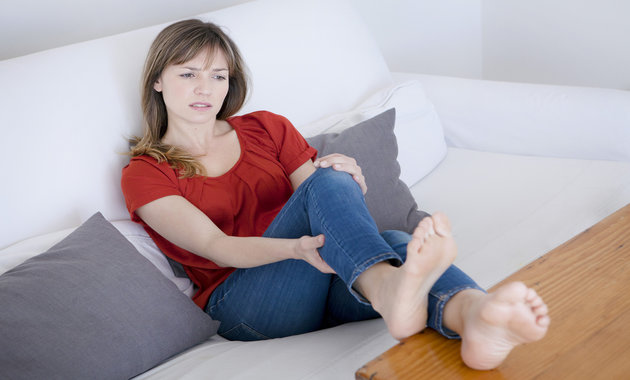A leg cramp is the pain that occurs in the legs due to an involuntary contraction of the muscles.The contraction is followed by a paralyzing stiffness forming a hard lump at the point of pain. Usually it lasts for a few minutes (upto ten). The contraction usually occurs in the muscles that are not voluntarily controlled for example calf muscles. Most commonly these cramps hit the calves and hamstrings (tendons at the back of the knee).
WHAT CAUSES LEG CRAMPS?
Some of the common causes of leg cramps are:
1 . Electrolyte Imbalance
Muscles require adequate amount of electrolytes such as sodium, magnesium, potassium and calcium in order to function properly. Deficit of these essential electrolytes, it becomes difficult for the body to conduct nerve impulses effectively and therefore causes muscle cramps.
2 . Dehydration
Excessive consumption of alcohol deprives the body of the available water content. Consequently, the body also looses the electrolytes responsible for the effective working of the ion channels for the nerve conduction. Drop in the salt levels serves as a major reason for muscle cramps.
3 . Vitamin Deficiency
Studies suggest that several vitamin deficiencies such as Vitamin B1, Vitamin B5 and Vitamin B6 have been found to be one of the causes for muscle cramps.
4 . Inadequate Circulation
Low blood supply to the legs is also associated with muscle cramping. It usually occurs during walking, exercising and physical activities. An inadequate supply of oxygen to the muscle tissue was also found to be associated with the occurrence of muscle cramps.
WHAT SHOULD YOU DO IF YOU GET LEG CRAMPS?
-You can use hot/cold therapy to relieve the pain immediately.
-A hot cloth or heating pad or a cold cloth compresses the sore muscles and relieve you from pain.
-Hot soak using epsom salts or dry heat in the form of heating pads can be very beneficial for relieving pain immediately.
-Avoid using a heating pad, in case you are a diabetic, have a spinal cord injury or a condition where heat could make it worse.
-Stretch the affected leg to reduce the pain immediately. Raise the leg a little higher and pull/stretch the leg from the affected area.
-Keep the affected leg fully stretched until the spasm stops.
-Massaging the calf muscle may help also help.
WHAT SHOULD YOU DO TO PREVENT LEG CRAMPS?
Here are some simple ways to prevent leg cramps:
1 . Maintain Hydration
-Drinking close to 7-8 glasses of water a day will keep your muscles in optimal working condition.
-Adequate amount of water in the body keep the electrolyte levels balanced and therefore lessen the chances of cramping.
2 . Exercise Regularly
-Make exercise a regular feature in your daily routine. It will help in improving blood circulation and also keep your muscles and bones healthy.
-Stretches can help you maintain a flexible body.
-Do not exercise after meals. Instead stroll for a while at an average pace.
3 . Increase Calcium Intake
-Enrich your diet with foods/ fruits that are a rich source of calcium, potassium and other essential vitamins such as oranges, kiwi, dates, plums, apricots and bananas.
-In case of severe deficiencies, consult a doctor and take vitamin supplements to ensure the adequate supply of desired vitamins and minerals.
4 . Increase Magnesium Intake
-Studies have suggested that low magnesium levels are directly associated with muscle cramps.
-Include foods/ fruits rich in magnesium in your daily diet such as dark green vegetables, banana, figs and nuts.
If your cramps do not improve or tend to worsen over time, you should consult a doctor for further evaluation. Stay Healthy, Stay Happy!
